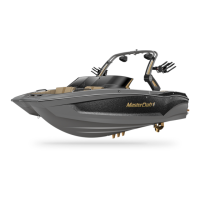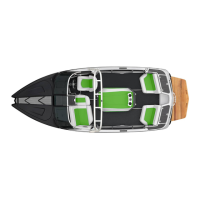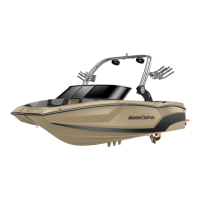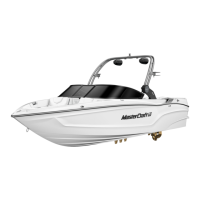2023 OWNER’S MANUAL
/
416
Reading Tire Wear
The way your tires wear is a good indicator of how your trailer’s
various systems are integrating. Abnormal wear patterns
are often caused by the need for simple tire maintenance or
alignment. Tires should be inspected at every opportunity.
Learning to read the early warning signs of trouble can prevent
wear that shortens tire life or indicates the need for having other
parts of the trailer serviced.
Tire Inspection Elements
• Visually inspect the tires
• Feel the tread by hand to detect tire wear such as feathering
• Check all tires with a tire pressure gauge
Samples of Abnormal Wear
Overinflation
Excessive wear at the center of the tread
indicates that the air pressure in the tire
is consistently too high. The tire is riding
on the center of the tread and wearing it
prematurely. Many times, the “eyeball”
method of inflation (pumping the tires up
until there is no bulge at the bottom) is at
fault. Tire inflation pressure should always
be checked with a reliable tire gauge.
Occasionally, this wear pattern can result
from extremely wide tires on narrow rims.
In such situations, tires or wheels will have
to be replaced.
Underinflation
This is the most common problem in trailer
tires. This type of wear usually results from
consistent underinflation. When a tire is
under inflated, there is too much contact
with the road by the outer treads, which
wear prematurely. Tire pressure should be
checked with a reliable pressure gauge.
Feathering
Feathering is a condition when the edge of
each tread rib develops a slightly rounded
edge on one side and a sharp edge on the
other. By running your hand over the tire,
you can usually feel the sharper edges
before you’ll be able to see them. The most
common cause of feathering is incorrect
toe-in setting. If this is occurring, have the
toe-in adjusted to a proper setting.
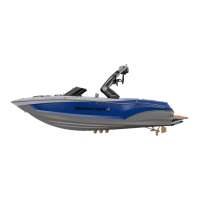
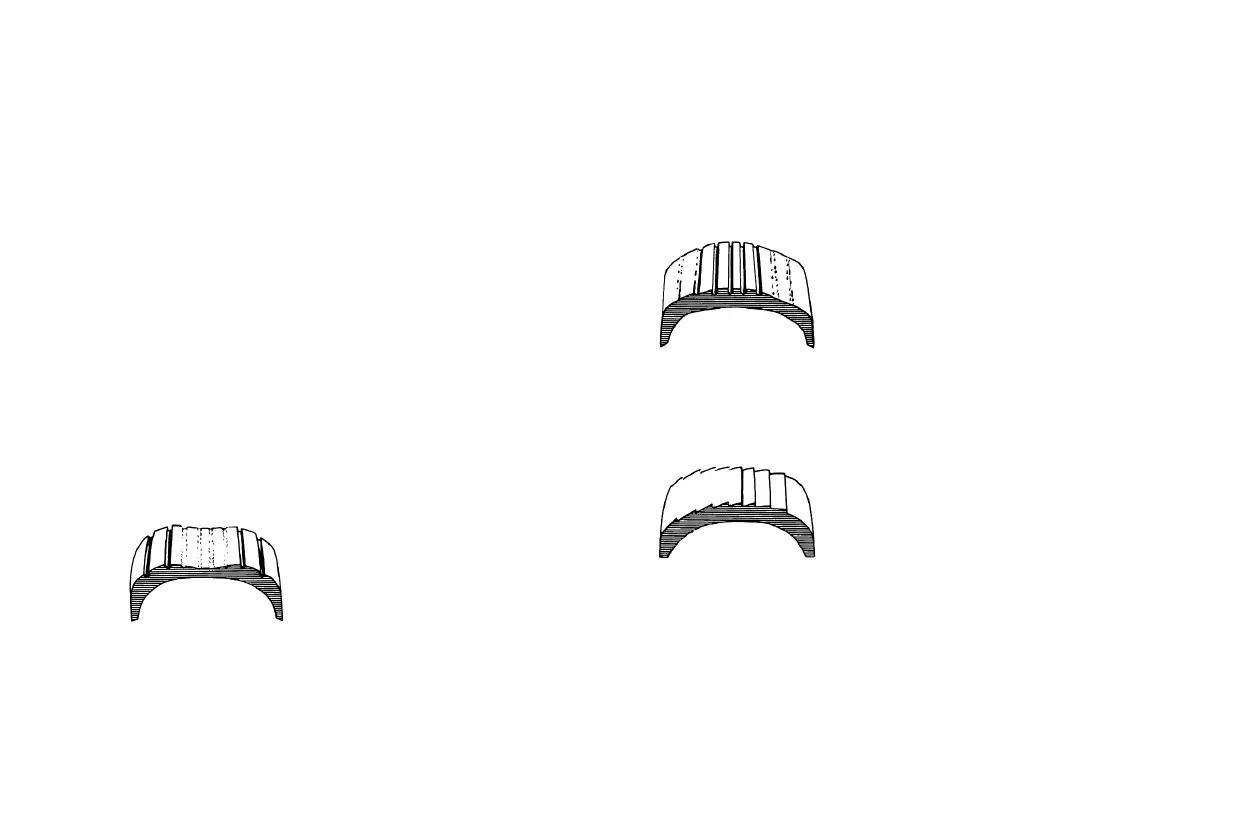